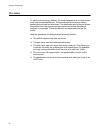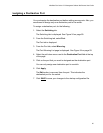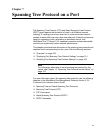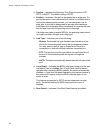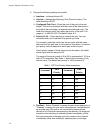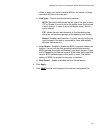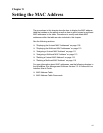
Chapter 7: Spanning Tree Protocol on a Port
100
Overview
STP and RSTP prevent loops from forming by ensuring that only one path
is available at a time between the switches in your network. Where
multiple paths exist, these spanning tree protocols place the extra paths in
a standby or blocking mode. In addition, these protocols can activate
redundant paths if primary paths go down. These protocols guard against
multiple links between segments and the risk of broadcast storms as well
as maintain network connectivity by activating backup redundant paths.
One of the primary differences between the STP and RTP protocols is in
the time each takes to complete the process referred to as convergence.
When a change is made to the network topology, such as the addition of a
new bridge, a spanning tree protocol determines whether there are
redundant paths that must be blocked to prevent data loops, or activated
to maintain communications between the various network segments. This
is the process of convergence.
With STP, convergence can take up to a minute to complete in a large
network. This can result in the loss of communication between various
parts of the network during the convergence process, and the subsequent
lost of data packets. RSTP is much faster than STP. It can complete a
convergence in seconds, and so greatly diminish the possible impact the
process can have on your network.
Only one spanning tree can be active on the switch at a time. The default
setting is RSTP.



